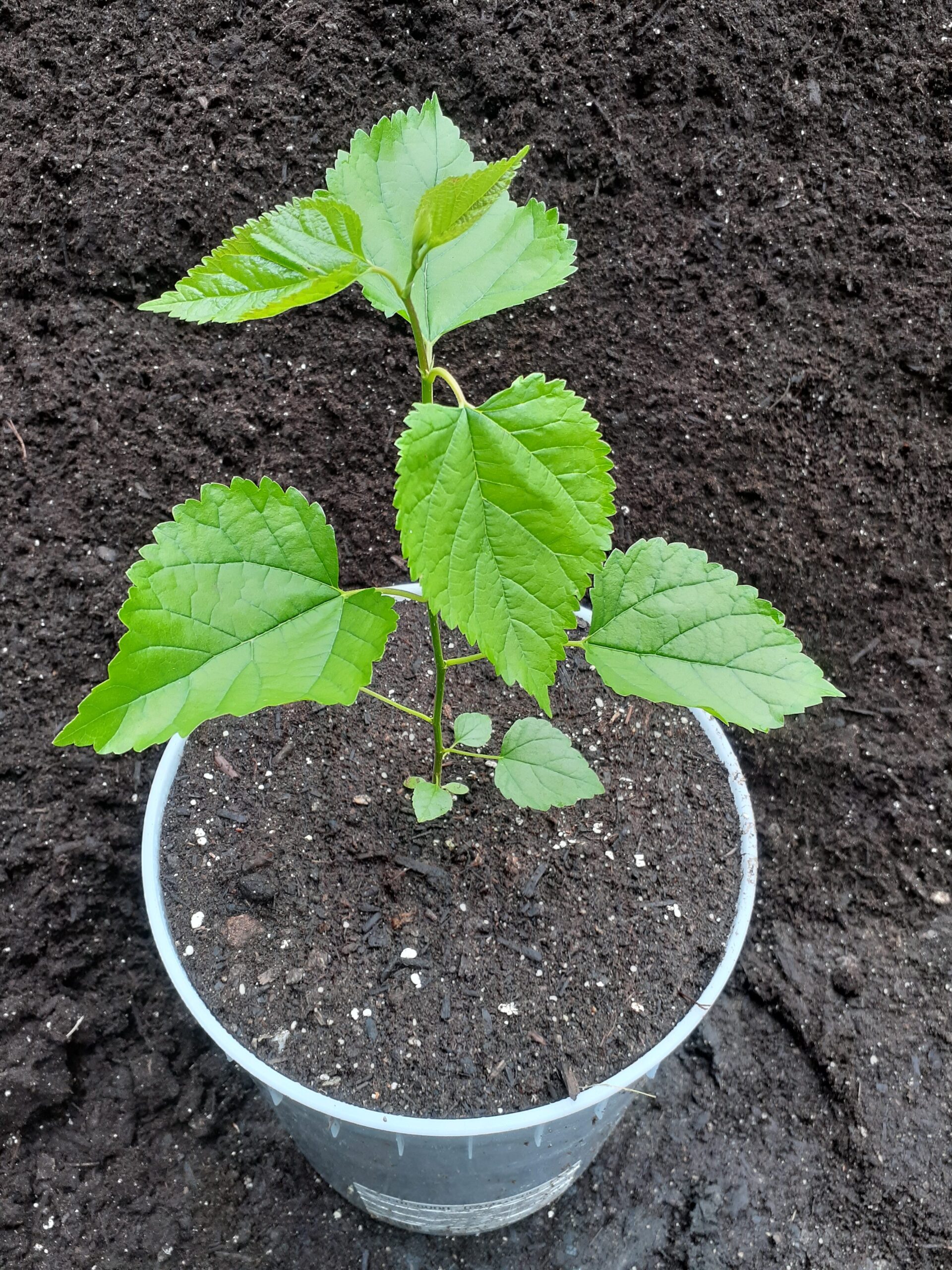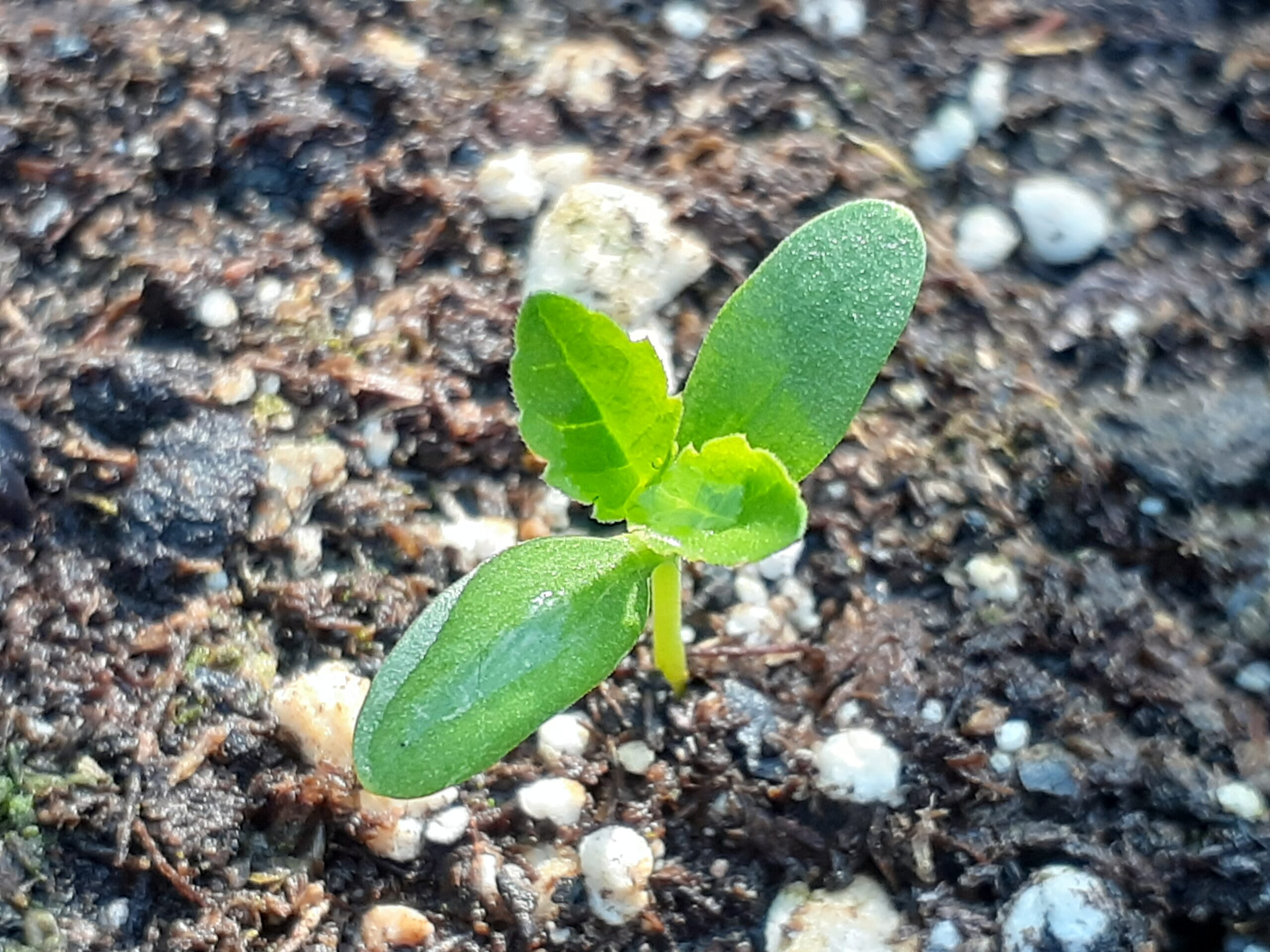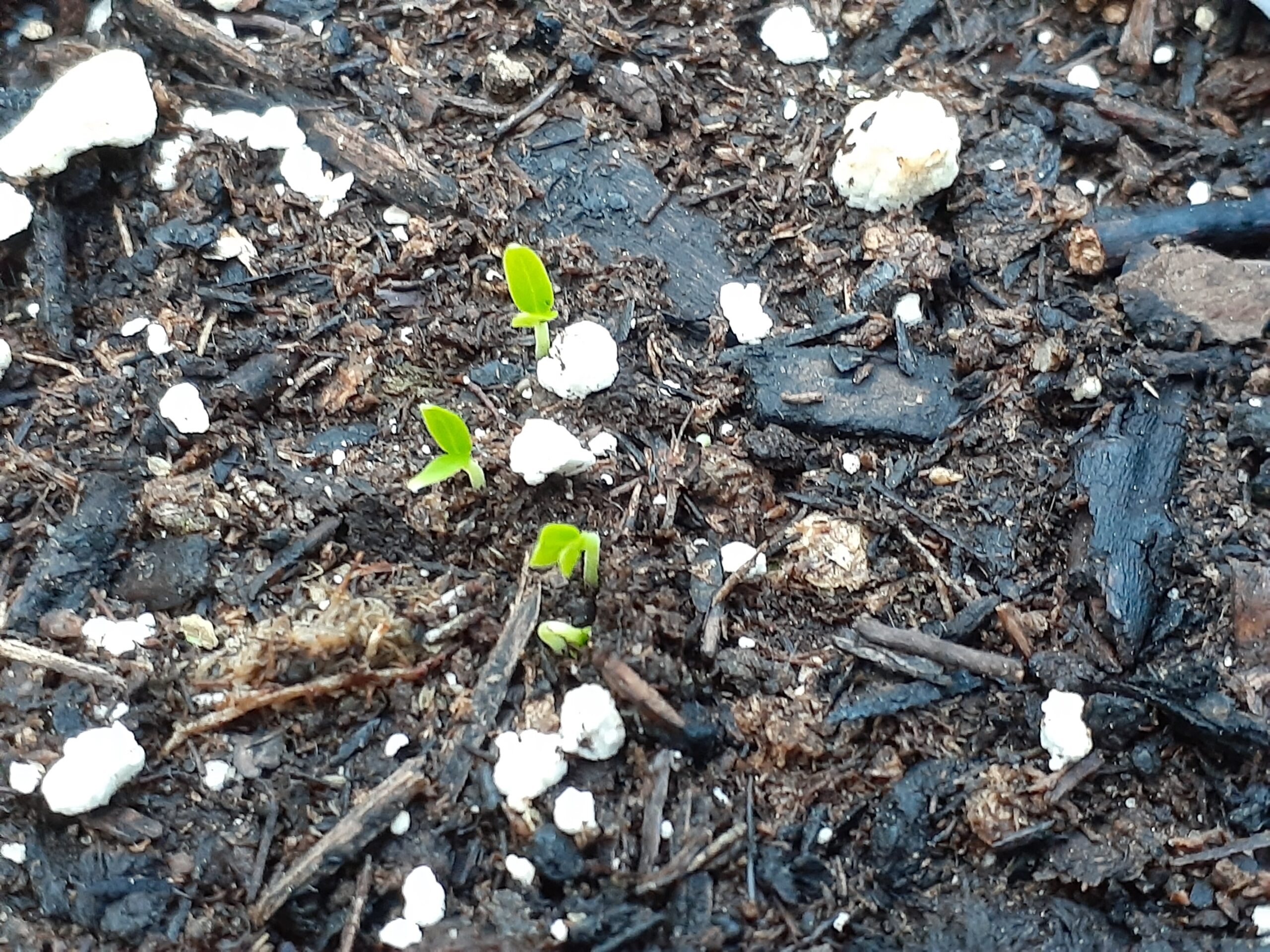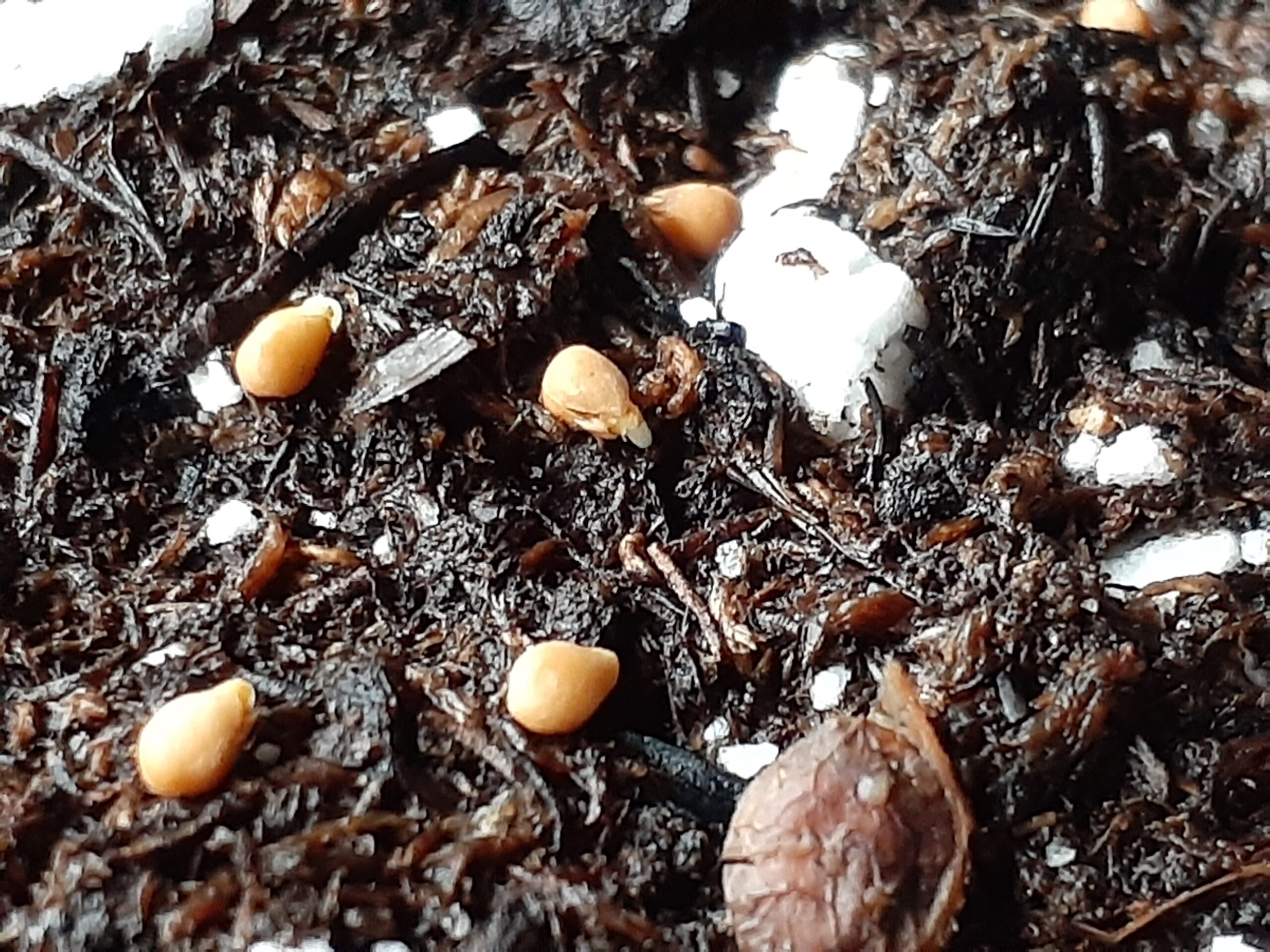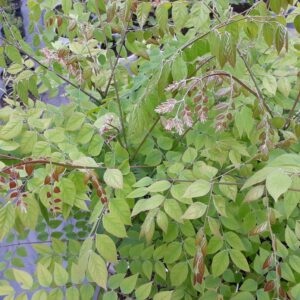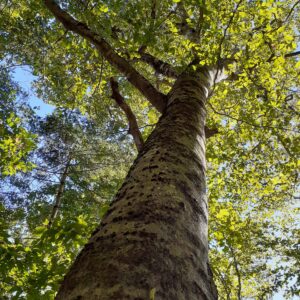Red Mulberry
Morus Rubra
Found growing naturally in a few isolated areas in southern Ontario. Rarely planted in New Brunswick. A medium size tree with a short trunk and wide spreading branches. Abundant fruit production of large red to dark purple berries (like blackberries) which are very nutritious to humans and wildlife alike. Wind pollinated male and female flowers usually on separate trees but sometimes on same tree. Only trees with female flowers will produce fruit. It’s best to plant at least 2 trees to boost chance of successful fruit production. It has been said that the species can change sex so if two males or two females are planted there is still the possibility of fruit production. Should not be planted adjacent to driveways or patios as berries will stain surface. Not best suited to large urban areas as bird droppings can also stain surfaces. Should be planted instead of non-native invasive White Mulberry from Asia. Red Mulberry is now considered endangered in Canada due to genetic contamination from hybridization with widely planted White Mulberry.
Additional information
| Foliage | Deciduous |
|---|---|
| Locale | Native to North America |
| Height | Medium (30-60ft) |
| Width | Wide |
| Form | Round |
| Growth Rate | Moderate |
| Longevity | Moderate (50 to 100 years) |
| Hardiness Zones * | 5 |
| Sun Exposure | Full Sun (over 6 hrs), Mostly Shade (slow growth), Partial Sun (4 to 6 hrs) |
| Soil Preferences * | Moist, Slightly Acidic, Well Draining |
| Soil Tolerances | Slightly Alkaline, Wet |
| Other Tolerances | Occasional Drought, Urban Pollution |
| Ornamental Interest | Fruit, Leaves (shape) |
| Wildlife Value | Birds (fruits/seeds), Butterfly Larvae (leaves), Small Mammals (fruits/seeds) |
| Human Value | Carpentry (wood), Edible (fruit) |
| Seed Collection | Ordered Online |
| Planting Considerations | Can Reseed Aggressively, Intolerant of Road Salt, Messy Seed Litter, Prone to Ice Damage |


